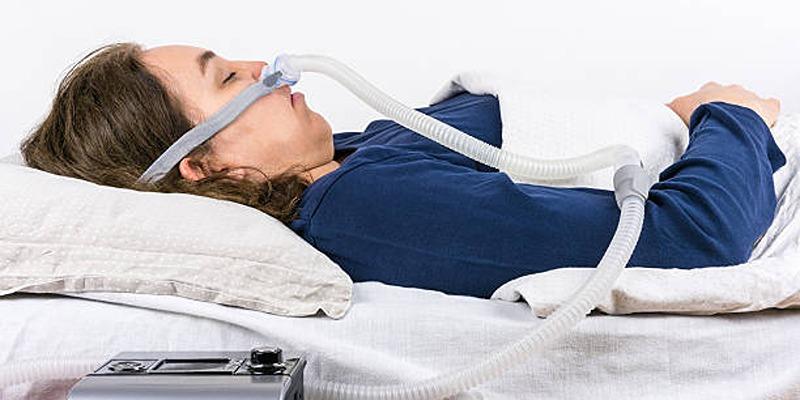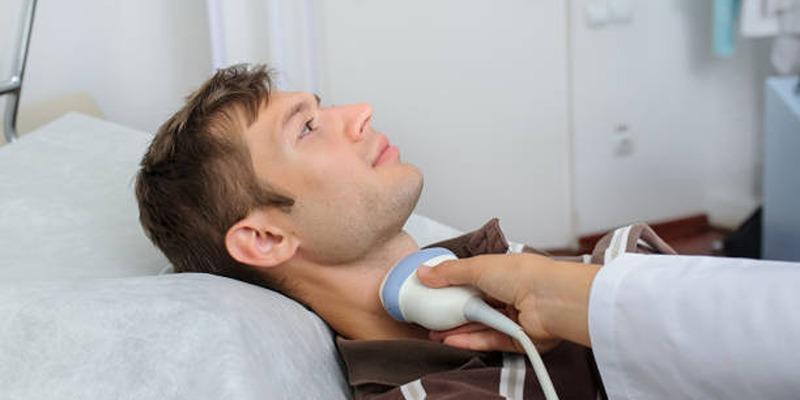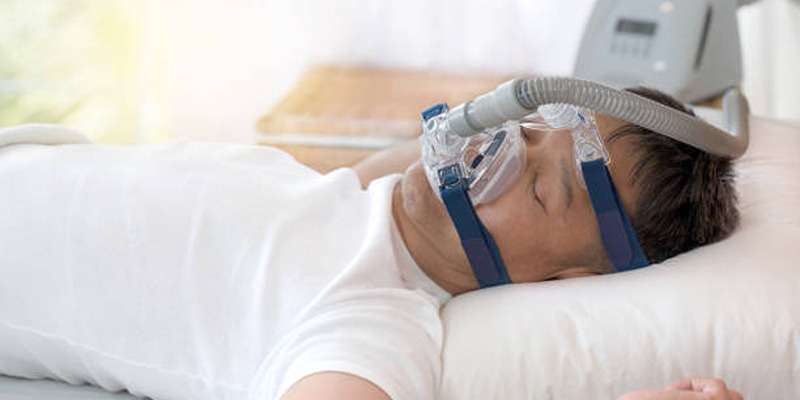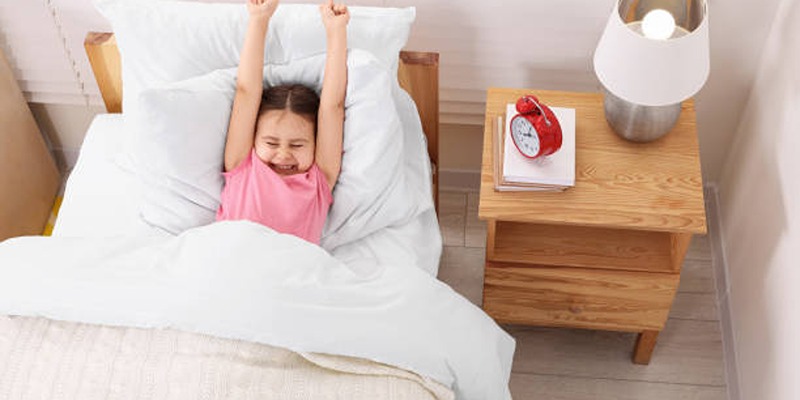Treating Mild Sleep Apnea: Exploring the Benefits of CPAP Devices
Advertisement
Continuous Positive Airway Pressure (CPAP) devices have revolutionized the treatment of mild sleep apnea, offering a non-invasive and effective solution. By maintaining open airways during sleep, these devices alleviate symptoms such as snoring and interrupted breathing. This article will explore the key benefits of CPAP therapy for individuals with mild sleep apnea, highlighting its role in improving sleep quality and overall health.
Understanding Mild Sleep Apnea:

During sleep people with sleep apnea experience disorder-related events because their airways become partially blocked or completely obstructed. Doctors classify mild sleep apnea as a condition that produces a minimum of 5 to a maximum of 15 interruptions in breathing known as apneas during sleep-time. Treatment of mild sleep apnea becomes necessary because the condition still introduces risks to health even though it does not match the severity of moderate or severe conditions.
The major symptoms of mild sleep apnea consist of typical snoring noises during sleep followed by sleep disruption and headache symptoms upon waking up and lasting exhaustion throughout daytime hours. Treatment of mild sleep apnea remains crucial because the condition may evolve into major medical conditions including hypertension and cardiovascular illnesses and metabolic conditions.
What is a CPAP Device?
A CPAP (Continuous Positive Airway Pressure) device is a medical tool used to effectively treat sleep apnea. It works by delivering a constant flow of pressurized air through a mask worn during sleep. This steady airflow keeps the airway open, preventing the collapses that lead to interrupted breathing, or apneas. CPAP therapy is widely considered the gold standard for managing sleep apnea, even in mild cases.
A CPAP machine consists of three key components: a motor that generates the airflow, a hose that channels the air, and a mask that fits snugly over the nose or both the nose and mouth. Modern CPAP devices are designed to be compact, quiet, and easy to use, making them an excellent option for home therapy.
How CPAP Therapy Benefits Mild Sleep Apnea?
1. Improves Sleep Quality
CPAP therapy is highly effective at restoring normal breathing during sleep, preventing airway blockages that disrupt rest. By ensuring uninterrupted sleep cycles, it promotes deeper, more restorative sleep, which reduces daytime fatigue and boosts energy levels.
2. Eliminates Snoring
Snoring, a hallmark symptom of sleep apnea, can disturb both the individual’s rest and their partner’s. CPAP therapy keeps the airway open, virtually eliminating snoring and creating quieter, more peaceful nights for everyone.
3. Boosts Cognitive Function
Even mild sleep apnea can affect memory, focus, and decision-making. By improving overall sleep quality, CPAP therapy sharpens mental clarity and enhances cognitive performance—an invaluable benefit for those with demanding work or academic responsibilities.
4. Reduces Health Risks
Left untreated, mild sleep apnea can increase the risk of serious health issues like high blood pressure, heart disease, and diabetes. CPAP therapy actively reduces these risks by maintaining consistent oxygen levels and alleviating strain on the cardiovascular system.
5. Boosts Mood and Emotional Well-being
Chronic sleep deprivation caused by sleep apnea can lead to irritability, anxiety, and depression. By improving sleep quality, CPAP therapy helps stabilize mood and promotes emotional well-being.
Addressing Common Concerns About CPAP Therapy:
While CPAP therapy is highly effective, some individuals may hesitate to use it due to common misconceptions or concerns. Let’s address these issues and explore practical solutions:
1. Comfort and Fit
A common worry is that CPAP masks might feel uncomfortable or restrictive. Fortunately, modern CPAP masks are designed with user comfort in mind. They feature soft, skin-friendly materials and adjustable straps for a customized fit. Additionally, users can choose from various mask styles, such as nasal masks, nasal pillows, and full-face masks, to find the option that best suits their preferences and needs.
2. Noise Levels
Older CPAP machines were often criticized for being too noisy, disrupting sleep for both users and their partners. However, advancements in technology have made modern CPAP devices much quieter, with many operating at noise levels as low as 30 decibels—about as quiet as a soft whisper.
3. Adjustment Period
Adapting to CPAP therapy can take time, as sleeping with a mask might feel unfamiliar at first. Most users, however, become accustomed to the device within a few weeks. To ease the transition, it can be helpful to start by wearing the mask for shorter periods during the day, gradually building comfort and familiarity.
4. Portability
For frequent travelers, portability can be a concern. Luckily, there are compact and lightweight CPAP devices specifically designed for travel. These portable machines make it easy to maintain your therapy routine, no matter where life takes you.
Maximizing the Benefits of CPAP Therapy:
Achieving the full benefits of CPAP therapy requires dedication and care. Here are some key strategies to help you get the best results:
Consistency is Key
Use your CPAP device every night, including for naps, without exceptions. Skipping even one night can disrupt your progress and make it harder to adapt to therapy. Consistent use is essential for improving sleep quality, increasing energy, and enhancing overall health over time.
Keep Your Equipment Clean and Functional
Proper maintenance is crucial for both hygiene and performance. Regularly clean your mask, hose, and filters according to the manufacturer’s guidelines to prevent the buildup of bacteria, allergens, or debris. Replace worn-out components as needed to ensure your device functions optimally and delivers effective therapy.
Optimize Your Settings
Comfort plays a significant role in successful CPAP therapy. Work with your healthcare provider to adjust the pressure settings if the default levels feel uncomfortable or ineffective. Many modern CPAP devices feature automated pressure adjustments, which adapt to your needs throughout the night, providing a personalized and comfortable experience without compromising effectiveness.
Choose the Right Mask
A well-fitting mask is essential for comfort and performance. If your current mask feels uncomfortable, leaks air, or irritates your skin, explore different styles, shapes, and sizes. Options include nasal masks, full-face masks, and nasal pillow masks, each catering to specific preferences and needs. The right mask not only enhances comfort but also ensures the therapy works as intended.
Stay Informed on CPAP Innovations
CPAP technology is constantly evolving, offering new features to enhance your therapy experience. Look for devices with built-in humidifiers to reduce dryness, data tracking to monitor your usage and progress, or smartphone integration for easy control and insights. Staying updated on advancements can significantly improve the comfort, efficiency, and convenience of your CPAP therapy.
The Long-Term Benefits of CPAP Therapy:

CPAP therapy offers far more than just immediate relief from sleep apnea symptoms—it delivers lasting benefits that can transform overall health and quality of life. Consistent use of a CPAP device has been shown to significantly reduce the risk of cardiovascular events, enhance metabolic health, and even increase life expectancy.
For those with mild sleep apnea, CPAP therapy serves as an effective, non-invasive solution that prevents the condition from worsening. By addressing sleep apnea early, individuals can mitigate the long-term health risks associated with untreated sleep disorders and enjoy a higher quality of life.
Conclusion:
While mild sleep apnea may appear to be a minor concern, its potential impact on health and well-being should not be overlooked. CPAP therapy provides a reliable, non-invasive treatment that can dramatically improve sleep quality and overall health. By exploring the benefits of CPAP devices and overcoming common concerns, individuals with mild sleep apnea can take meaningful steps toward better rest and a healthier future.
On this page
Understanding Mild Sleep Apnea: What is a CPAP Device? How CPAP Therapy Benefits Mild Sleep Apnea? 1. Improves Sleep Quality 2. Eliminates Snoring 3. Boosts Cognitive Function 4. Reduces Health Risks 5. Boosts Mood and Emotional Well-being Addressing Common Concerns About CPAP Therapy: 1. Comfort and Fit 2. Noise Levels 3. Adjustment Period 4. Portability Maximizing the Benefits of CPAP Therapy: Consistency is Key Keep Your Equipment Clean and Functional Optimize Your Settings Choose the Right Mask Stay Informed on CPAP Innovations The Long-Term Benefits of CPAP Therapy: Conclusion:Advertisement












